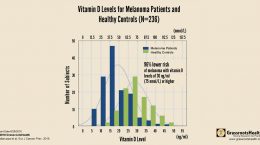Published on May 15, 2019
 Cognitive impairment is often a gradual, long-term process that affects many older individuals. In October 2018, results from a study assessing the association between sun exposure and cognitive function were published in the journal Clinical Interventions in Aging. In this study, 1192 participants aged 60 years and older and residing in rural China provided information about their long-term sun exposure behaviors including time of day when outdoors, duration outdoors, and use of sun protection. The research team used the Mini-Mental State Examination (MMSE; maximum score of 30) to assess participant’s orientation, memory, language, calculation, and attention.
Cognitive impairment is often a gradual, long-term process that affects many older individuals. In October 2018, results from a study assessing the association between sun exposure and cognitive function were published in the journal Clinical Interventions in Aging. In this study, 1192 participants aged 60 years and older and residing in rural China provided information about their long-term sun exposure behaviors including time of day when outdoors, duration outdoors, and use of sun protection. The research team used the Mini-Mental State Examination (MMSE; maximum score of 30) to assess participant’s orientation, memory, language, calculation, and attention.
What were the findings of the study?
As shown in the chart below, the research team found that participants in the high sun exposure group had a higher average MMSE score of cognitive function compared to participants in the medium or low exposure groups (P<0.05). Additionally, those with high sun exposure were more likely to have better cognitive function than those with low sun exposure (P=0.004) after adjusting for dietary intake of vitamin D, vitamin D supplement use and other factors such as age, sex, BMI, and education.
While the most effective time for vitamin D synthesis is mid-day, all three sun exposure groups had relatively low mid-day (11:00 am – 1:00 pm) exposure. The high- and medium- exposure groups spent more time outdoors in the surrounding hours of the morning (8:00 – 11:00 am) and afternoon (1:00 – 4:00 pm) whereas the low-exposure group tended to spend time outdoors during early morning (6:00 – 8:00 am) and late afternoon (4:00 – 6:00 pm).
This study shows that long-term high sun exposure throughout life could reduce the risk of cognitive impairment in the later years of life.
Are you using sun exposure as a source of vitamin D?
Is sun exposure helping to improve your vitamin D level? Make sure you know your vitamin D level, and see if you are in the target range of 40-60 ng/ml (100-150 nmol/L). Find out your levels today! Log on to the shop (click the link below) to get your tests and see for yourself if your levels can be improved. Use coupon code SunMonth to receive 15% off during Sunshine Month only!
Make sure you track your results before and after, about every 6 months!
Click Here to Access the Shop Page
How can I track my sun exposure and my vitamin D levels?
To help you track your sun exposure and nutrient levels, GrassrootsHealth has created an online tracking system called myData-myAnswers. You can also track your supplemental and dietary nutrient intake to see how they impact your nutrient levels. Check it out today!








